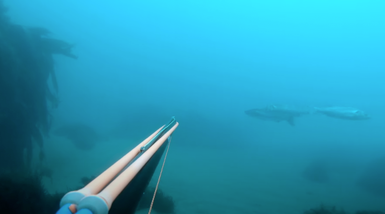Posted by Dave Stephens on 9th Nov 2023
Spearfishing Techniques for the UK
Some of the main Spearfishing Techniques used in the UK (not an exhaustive list, but the most common practices)
Stalking
The way most people start Spearfishing, slowly drifting through the shallows for Bass and Mullet.Generally best with the tide behind you so minimal fin and leg movement (noise).You may find some areas are better against the tide, but bare in mind fish generally swim against the tide. Try and be as slow and quiet as possible.
Try and find ground with string/Jap weed which will help hold the fish or some structure.
Gun wise its very difficult to have the right gun in your hand all the time, as fish can be close or further away, and the weed can get in the way with longer guns.. Certainly something to experiment with, but a good starting point would be a 75 as it’s a good allrounder (preferably something light/thin and manoeuvrable).
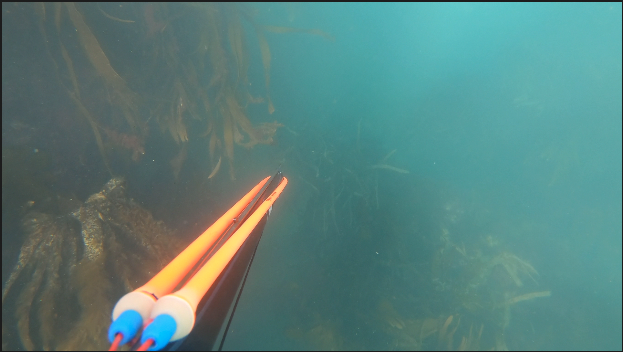
Aspetto – Ambush/lying in wait.
Very popular and successful technique to use in the UK, great for most species, in particular Bass, Pollack and Bream.Relatively simple to achieve by literally diving down and waiting for fish to come to you (generally in an inquisitive way).You can either look to hide in the weed, or behind structures etc, or simply in full view on the bottom.. Any of these can work on any given day, depending on many variables.
Generally looking to have the tide behind you, so the fish swim towards you against the tide, or also at an angle pointing yourself either 45 degrees inshore or offshore.This technique can be very rewarding albeit challenging due to the changing success depending on how the fish are acting on the day (many different things can effect this – Tide, ground, time of day, seals/dolphins in the area and many more).
Gun wise, this suits longer guns, something like a 90 works well.
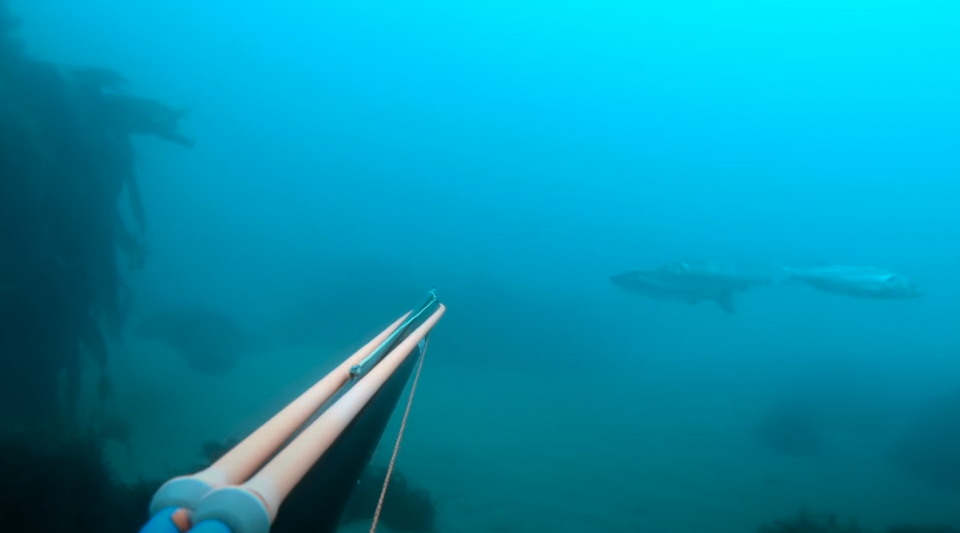
Agguato – Dynamic Ambush
This technique is Similar to Aspetto but on the move.Simply a dive down, but rather than sitting and wating on the bottom, look to fin slowly over the ground.This technique is particularly useful when going across broken ground (rocks) and kelp beds, either looking for fish laying up or sitting out the tide.Again look to have the tide behind you, one to save energy but also to cut down on movement and noise.
Look to have your gun pointed directly in front of you to minimise drag, unless specifically looking down into the kelp where you might want it at 45 degree angle.
Gun wise can depend on the visibility and the type of fish your looking for.75 to 90 range and something easy to manoeuvre as most fish will require some movement to get the shot away.
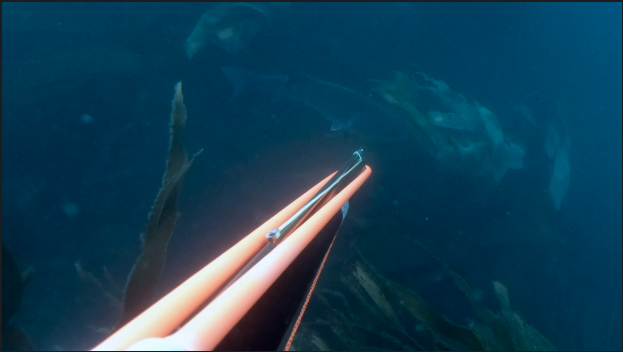
Hole fishing
One of the more challenging techniques to master.As a general rule the further east you go along the south coat (Sussex area) the more holes you will find.The further west you go, Dorset, Devon, Cornwal you will start to find fewer holes (in that order).
Fish are in the holes for a few reasons, resting/digesting/keeping out the tide/or spooked.Species wise, most hole fishing is done for Bass, but you will find many species in holes like, Mullet, Pout, trigger fish and congers for example.
On a personal level my own hole hunting improved by fishing in the med, where you learn stealthy ways to fish for them without spooking them… Ie torches shining directly on the fish. If you can avoid using a torch it will help.
Generally fish will go into a hole which has at least two entrances/exits, unless they have been spooked into a hole they don’t know.
Sometimes a good approach is to sit back from a hole and see if the fish come out to you, this is particularly successful if it’s a hole you know quite well, and have seen fish there before.
The other main technique is getting down in there (be careful not to get caught inside with any lose gear or anything which you could get caught on).Having a little look from above a hole by having alook without your whole body in view can help not spook the fish, but also give you an idea exactly how to approach fishing the hole.Once its known you are there, you will need to look to get your shot away quickly as the fish are likely to bolt.
Gun wise, generally a shorter gun like a 60 or 75 will be best.
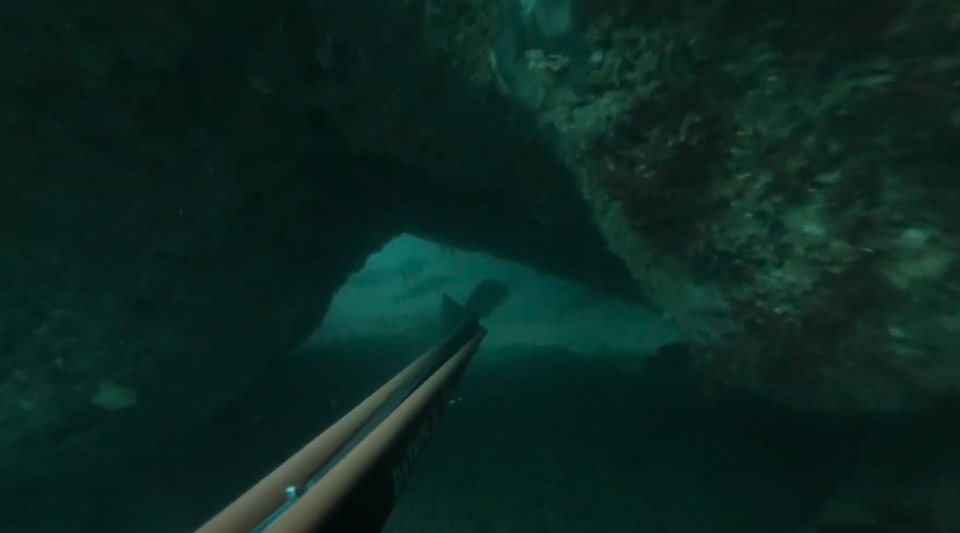
Flat fish hunting
With flat fish making a bit of a comeback in the last few years, this has made fishing for them a lot more successful of late.
Generally your looking for sandy areas , either close in or further out depending on the species… If it’s a diveable depth and you have the visibility swim along parallel around 1-2 m off the bottom, so you can scan in front and left/right.Sometimes flatfish can be heavily buried, other times sat on the sand, this is due to time of the day, feeding or not feeding for example.Once you get your eye in, they become easier to spot.
In deeper water look for scours in the sand, as Plaice in particular like to sit in or up them if they are feeding. Also mussel beds are a particular favourite for Plaice.
Generally the best time for fish for flatfish is early morning or last night, as that’s when they are most active.
Gun wise, nothing long is needed as should be close shots or even stabbing them.
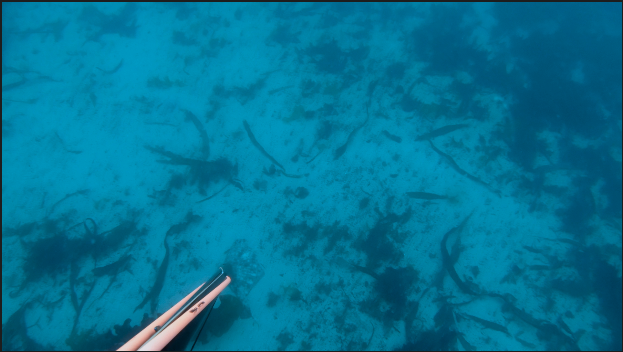
https://www.youtube.com/@fins4u718 – Some videos on our youtube channel showing many of these techniques.
Good luck trying out these techniques, and remember most importantly, Dive Safe.

